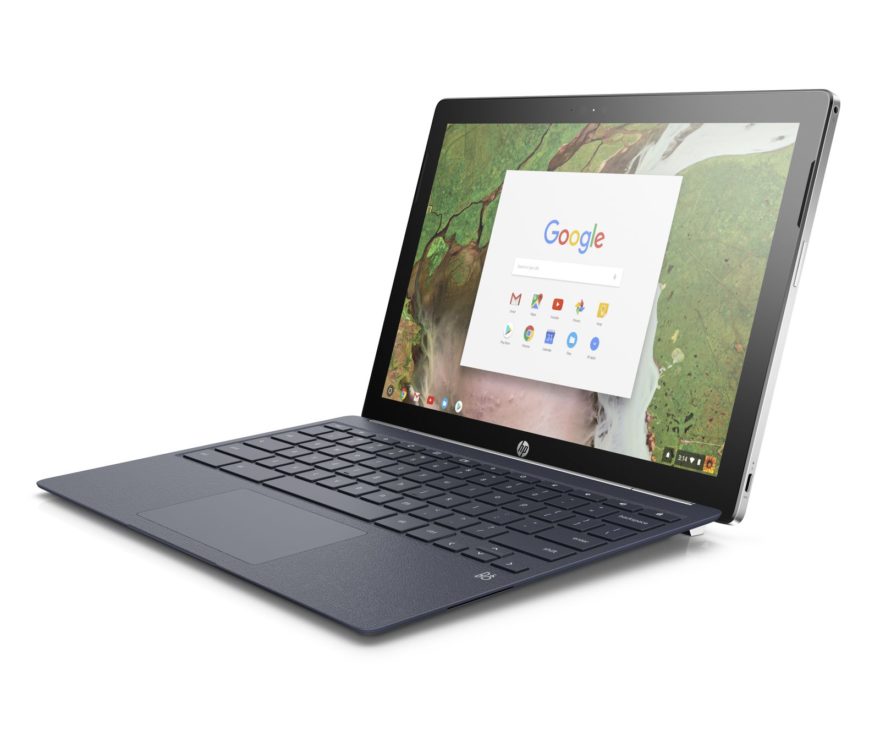I suspect Best Buy is cleaning out some inventory as the normally priced $599 HP Chromebook X2 is currently reduced to $349. This was the first detachable display Chromebook that debuted last April and first went on sale the following June.
I purchased one immediately and although I felt there were some small quirks, I was very impressed by the device overall. Among those quirks were the very light keyboard with a very heavy metal hinge; the balance just felt off when using the Chromebook on my lap.

However, from a performance standpoint and overall experience, it met all of my needs at the time.
I ended up returning it only because I felt my needs would grow beyond the hardware capabilities: I had planned to take programming courses at my local community college and figured I’d need more memory and storage. I opted for a used Pixelbook instead and later replaced that with a Core i5 Pixel Slate, which is working great for my Java and Python education.
Here’s a rundown of the HP Chromebook X2 specs:
- Fanless Intel Core m3-7Y30 processor
- Intel HD Graphics 615
- 4 GB of memory
- 32 GB of eMMC storage, memory slot for expansion
- 12.3-inch detachable display with 2400 x 1600 resolution
- Touch and pen support (pen included)
- 2 USB Type-C ports
- HD front webcam, 13 MP rear camera
- 802.11ac Wi-Fi and Bluetooth 4.2
- Expected run-time of 12.5 hours
Granted, the seventh-gen Core m3 is a step behind currently available eighth-gen Core processors found in more recent Chromebooks. And both the memory & storage are bare-bones minimum in what I’d consider in a Chromebook these days.
However, at this price you’re getting a daily driver with detachable, high-resolution screen – the same as the Pixelbook – for much less than most newer options on the market today.
Put another way: If I could afford something for $399 or less today, I’d pick this over a less-expensive, entry-level Chromebook, with the sole exception of the Dell Inspiron Chromebook 14, which is currently on sale for $50 more than the X2.



3 Comments
“And both the memory & storage are bare-bones minimum in what I’d consider in a Chromebook these days.”
Hardly anyone would disagree. But, if you get a chance someday, your readers might be interested in your take on trends in how the makers are matching processors with Chrome OS devices based on targeted end-user, screen size & resolution, mobility, consumer preference, etc. It seems that Pentiums aren’t being used anymore. ARM, like OP1, seems to be vanishing. And while the higher end Celerons like N4000 and N4100 are used a lot, they’re strictly ending up in ruggedized, military-spec education devices. Personally, I think that Acer made a colossal mistake by going too cheap with the Chromebook Tab 10; if they’d used an N4100, or even an m3, and bumped up the screen resolution, they’d be having trouble keeping the shelves stocked.
Any sign of a successor to this Chromebook from HP? It was nice that the keyboard and pen came in the box, and an updated x3 with more RAM/storage/CPU would be great…
Not yet and I agree!